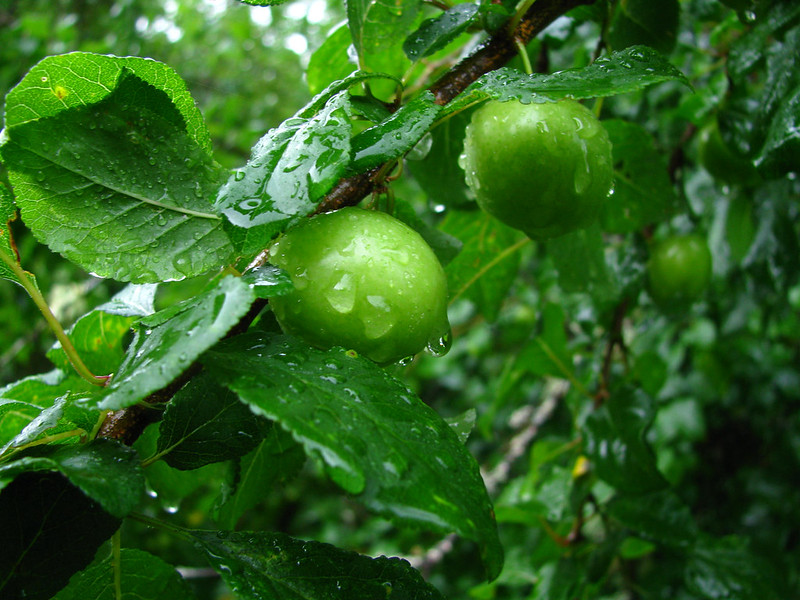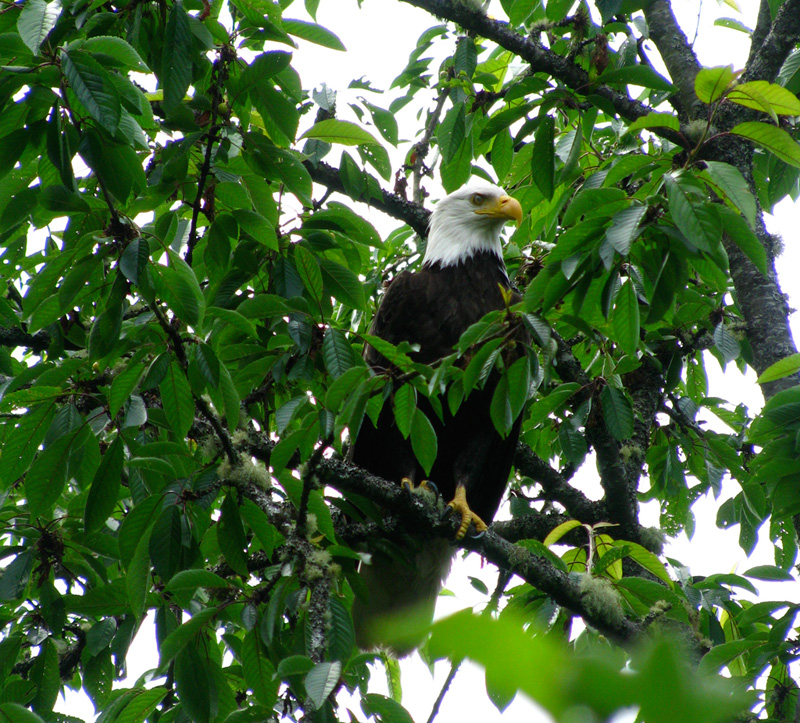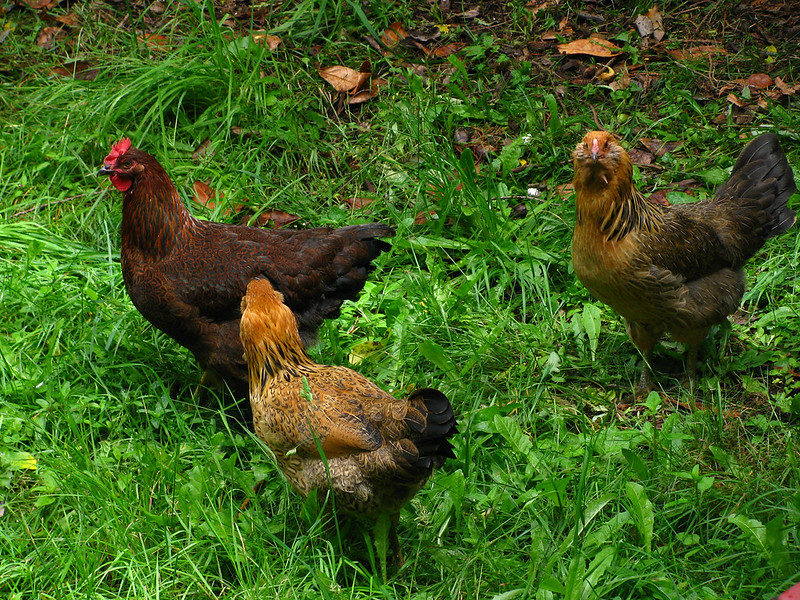
‘12

‘12
The sweat of midsummer
A heavy cherry plum branch splits
Sour and hard until August
‘12
Eyes on the Sky

A bald eagle perches in the Royal Ann cherry tree.
June was a hard month to be chicken keepers. During the cold wet of winter, we'd girded ourselves and adapted to the predation of chickens by coyotes and (possibly) other four-legged scavengers. We locked the hen house at night, played the radio by day, and patted ourselves on the back when coyotes stopped taking chickens entirely.
Unbeknownst to us, this was only a lull. An eagle has taken a personal interest in our chickens. Once upon a time, we admired the bald eagles' broad wingspan and honored them as apices of skyborne majesty. In June, that veneration turned to dread.
The first disappearances were mysterious but easily explained; perhaps a coyote was making the rounds? The eccentrics of our flock were the first to be picked off: A skittish Golden-Penciled Hamburg with a penchant for early-morning escapes vanished, leaving behind a puff of black and gold feathers. Next to be taken was hunch-backed Partridge Rock who we'd nicknamed "Junior" for her tendency to follow at our heels like a pesky younger sibling. She was an unhealthy runt who we'd pondered putting down for her physical deformity but had kept for her unflappably sweet disposition.
We hadn't expected those two chickens to have a long life-expectancy, but we began to realize the severity of our problem when we saw the eagle more and more frequently. A mature, coyote-tested Barred Rock hen was taken within a few paces of the hen house, and a Black Star mother was killed but managed to save the chick she was raising. This last death was particularly disheartening for me, as I'd been inordinately proud and pleased by her able mothering. Feeling as though we were running a boutique supermarket for aquiline shoppers, I pondered whether raising chickens was something I wanted to do.

Galahad stands guard. Note the scars on his comb from previous sparring with marauding coyotes.
That was midway through June. Since then, the eagle's attention hasn't waned. It perches in the cedar and cherry trees near the house, swooping low across our property ready to snatch any chickens that make a wrong move. However, two variables are helping stymie the eagle's routine culling of our flock. Our local crow population has taken note of its presence and have set up a neighborhood watch program, with volunteer shifts chasing and dive-bombing the eagle as it flies by or perches. Secondly, our chickens have become cannier. When they spot a shadow sweeping overhead, they'll scuttle for cover. The roosters cluck a warning and stand guard while the hens run under a porch or into a bush. They've worked out that the crows are an early warning system — angry cawing is a cue for our chickens to make themselves scarce.

Two Araucanas and a Patridge Rock forage for bugs without straying far from their favorite hideout: a laurel hedge.
The eagle hasn't showed any signs of losing interest yet, unfortunately. In the past three weeks, we lost two or three juvenile chickens who were in their first weeks of free ranging and weren't yet wise to airborne threats. We've had at least one near miss — talons full of feathers but an alive and well Araucana. The losses have been stanched, but we're still puzzling out how best to protect our chickens while allowing them the free-roaming lifestyle they seem to love. Meanwhile, we admire the eagle's grace by running pell-mell to the yard when we spot it making a low pass.

A Silver-Spangled Hamburg hen and an Araucana keep a lookout for eagles.
‘12
And how rare

